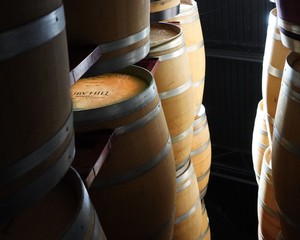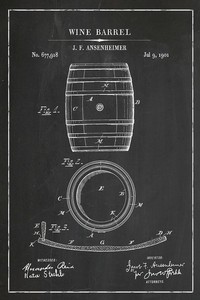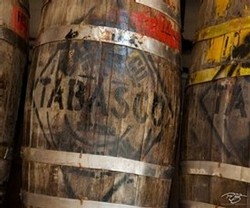Feeling Oaky: Weird Facts about Barrels
 They say “it’s what’s on the inside that counts” and when it comes to our wine barrels, we agree. Even still, we’re happy to take a moment to appreciate what these oaken masterpieces bring to the industry. Below, we’ve included some of our favorite obscure barrel facts. See if you can find a favorite!
They say “it’s what’s on the inside that counts” and when it comes to our wine barrels, we agree. Even still, we’re happy to take a moment to appreciate what these oaken masterpieces bring to the industry. Below, we’ve included some of our favorite obscure barrel facts. See if you can find a favorite!
 Barrels were a much needed innovation
Barrels were a much needed innovation
Wooden barrels have an illustrious history that dates back as far as 350 BC. Prior to barrels, wine was stored in containers made of clay or goat skins. The clay containers, called amphorae, were infamous for being heavy and highly breakable (not to mention the flavor they could impart). The transition from clay to wooden barrels began during the Roman times.
Tiny artisan barrels were a beloved possession
Early barrels were produced on a very small scale as drinking vessels. Small staves of oak, yew or pine would be tightly fastened together by metal loops. Craftsmen would make these vessels using precious metals and the resulting items were so prized by those who owned them that they sometimes chose to be buried with them.
 Early barrels might remind you of an IKEA project
Early barrels might remind you of an IKEA project
Archaeological finds of early full-size wooden barrels show that some barrels included Roman numerals on the staves to aid in assembly if needed. After the barrels had fulfilled their purpose, the staves were often reused to line shallow wells. Barrels in this era could be made from silver fir, cedar, larch, or oak.
Barrels brought peril
As barrels continued to be produced as handy tools, they earned a small role in warfare. While besieging cities, Julius Caesar would order barrels of tar to be set ablaze and then catapulted into the city. On at least one occasion, the town returned fire by rolling flaming barrels back down onto the attacking forces.
Barrels give some up to the angels
Even though barrels are remarkably watertight, there is always a slight loss of volume due to evaporation while wine or another distilled spirit is aging in an oak barrel. The evaporated portion is a combination of water and alcohol and is referred to as the “angels share.” Winemakers account for this loss and monitor the capacity of the barrels.

Barrels are a cask of all trades
You probably knew that barrels are the container of choice for aging wine and whiskey, but how about other products? Historically, resources like gunpowder, meat, fish, paint, honey, nails and tallow would be stored in wooden casks. In modern times, barrels are used for products like traditional balsamic vinegar, specialty tequila, and Tabasco sauce.
Barrel anatomy words are great for scrabble
The words used to describe the different pieces of a barrel include staves, bilge, chime, and bung hole. Rather than a “lid” wine barrels have a small hole, called a bung hole. The bung hole is drilled in one of the staves at the bilge, which is the widest part of the barrel. The stopper (called the “bung”) is usually made of white silicone and keeps the precious cargo from leaking out.
If you would like to repurpose a decommissioned Ruby Hill barrel, we're selling! Our 100% oak barrels have served their time keeping our wine safe and delicious and are now looking for a new home. Available for pickup anytime at our sister winery, Rubino Estates. Call (925) 484-1699 with inquiries or to purchase your own!
Comments
Commenting has been turned off.Enjoy complimentary ground shipping when you order 6 or more bottles.
Sign Up For Our Newsletter
Keep up to date on the latest wine releases, events, and promotions.
